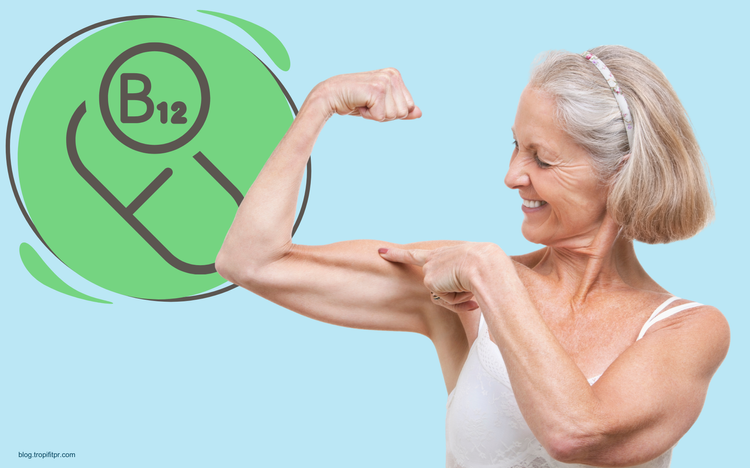Potatoes vs Sweet Potatoes

Some say, "Don't eat potatoes; they are full of starch". Others say sweet potatoes should be eaten every day and are the ultimate superfood.
The discussion about which type of potato is the healthiest has been going on for a long time. And let's face it, it will probably continue for decades to come.
In this potato mini-guide, you will learn more about regular white potatoes and sweet potatoes and why you can easily include both in your diet.
They Are Not The Same

Potatoes and sweet potatoes might share the same name but are entirely unrelated.
- Regular white potato is in the family called "Solanaceae", related to tomatoes, peppers, and eggplants, and there are 4000 known varieties of potatoes.
- Sweet potato is in the family called "Convolvulaceae", related to morning glory, vines, shrubs, and herbs. There are as many as 5000 known varieties around the world.
Both the regular potato and the sweet potato are initially from South America. They have since spread out to the rest of the world.
acLook at the farmer's market or in the supermarket. You will be able to find regular potatoes in shades of brown, yellow, red, with white or yellow flesh. Sweet potatoes typically have brown skin, which can also be orange, purple, yellow, or red.
High Carbohydrate
Many people know that potatoes and sweet potatoes contain carbohydrates — some would even say a lot.
In 2010 Chris Voigt, the executive director of the Washington State Potato Commission, decided to prove a point against all anti-carb diets. He committed to a somewhat absurd experiment: he ate only potatoes for 60 days.
During the 60 days, Voigt ate 20 potatoes a day, which equals 2.300 calories. He avoided gravy, butter, and sour cream. The only added flavour was general seasoning and a little oil for cooking.
On day 60, he had lost 21 lbs / 9,5 kg, his cholesterol level was down by 60 points, and his triglycerides and blood glucose had improved.
The purpose of the publicity stunt was to show that while potatoes are high in carbohydrates, it's not invariably a bad thing.
*It is important to note that the potato diet was a fascinating experiment and not recommended.
Macros, Vitamins, and Minerals
When comparing potatoes and sweet potatoes, you will see that the absolute winner in the Vitamin A category is the sweet potato.
The regular potato has 9 "wins", and the sweet potato has 6 "wins". If you look closely, you can see that almost all the nutritional information is pretty close, making it practically a draw between them.

The Glycemic Index
Let's check out another exciting indicator. The Glycemic Index (GI) measures how quickly a food converts to glucose. Foods with a GI of 70 or higher cause a more rapid increase in blood sugar, and a medium GI would be 56-69 and a low GI of 55 or less.
Interestingly, the cooking method of potatoes and sweet potatoes makes a big GI difference. For example, a boiled sweet potato has a low GI of 41-50, and roasting or baking will increase the score to 79-94.
A boiled regular potato has a GI of 80-89. In contrast, baking or roasting increases the score to 111—the typical potato scores more due to its higher starch content.
So, if you are concerned about the impact of potatoes on your blood sugar, always choose to boil over any other cooking style.
How You Prepare Your Potatoes

Potatoes and sweet potatoes are highly nutritious, but unfortunately, they are often "made" unhealthy. For example, potatoes get turned into French fries. They can be mashed and mixed with butter and cream and baked while topped with a variety of high-calorie ingredients.
Sweet potato is often made into a pie or combined with sugar and marshmallows, for example.
Instead, prepare regular and sweet potatoes by boiling, steaming, or baking them, rather than frying or roasting them and leaving the skin on for more fibre. Then serve them with fresh herbs or spices instead of cheese, butter, or cream.
There Are Many Benefits
- Both regular potatoes and sweet potatoes give you energy, fill you up, and therefore leave you satiated for a long time.
- Eating a sweet potato will often satisfy sugar cravings, especially if you bake it.
- Consuming potatoes and sweet potatoes will provide you with fibre which might help you prevent heart disease by keeping cholesterol in check.
- Sweet potatoes, especially the red and purple ones, are rich in antioxidants which help fight cell damage in your body.
- There are many great benefits of eating potatoes and sweet potatoes.
- Try to explore the types of potatoes and sweet potatoes that are available. Next time you're at the farmers market, look for unusual and colourful new varieties and try them out.
- You can even try to grow some in your garden.
Reference
- https://pubmed.ncbi.nlm.nih.gov/31235927/ The origins and adaptation of European potatoes reconstructed from historical genomes. Rafal M Gutaker, Clemens L Weiß, David Ellis, Noelle L Anglin, Sandra Knapp, José Luis Fernández-Alonso, Salomé Prat, Hernán A Burbano
- https://www.ncbi.nlm.nih.gov/pmc/articles/PMC2988560/ This spud's for you: a two-month, tuber-only diet. Roger Collier
- https://www.ncbi.nlm.nih.gov/pmc/articles/PMC3205609/ Relationship between Processing Method and the Glycemic Indices of Ten Sweet Potato (Ipomoea batatas) Cultivars Commonly Consumed in Jamaica. Perceval S. Bahado-Singh, Cliff K. Riley, Andrew O. Wheatley,, and Henry I. C. Lowe
- https://www.ncbi.nlm.nih.gov/pmc/articles/PMC4854395/ Bioactive Compounds in Potato Tubers: Effects of Farming System, Cooking Method, and Flesh Color. Magdalena Grudzińska, Zbigniew Czerko, Krystyna Zarzyńska, and Monika Borowska-Komenda. Xiu-Qing Li
- https://pubmed.ncbi.nlm.nih.gov/17992183/ Glycemic index and glycemic load: measurement issues and their effect on diet-disease relationships. B J Venn , T J Green
- https://pubmed.ncbi.nlm.nih.gov/23674808/ Health-promoting components of fruits and vegetables in the diet. Rui Hai Liu
- https://pubmed.ncbi.nlm.nih.gov/19960391/ Potatoes and human health. Mary Ellen Camire , Stan Kubow, Danielle J Donnelly
- https://pubmed.ncbi.nlm.nih.gov/24921903 Sweet potato (Ipomoea batatas [L.] Lam)--a valuable medicinal food: a review. Remya Mohanraj, Subha Sivasankar
- https://pubmed.ncbi.nlm.nih.gov/14747225/ Efficacy of Ipomoea batatas (Caiapo) on diabetes control in type 2 diabetic subjects treated with diet. Bernhard Ludvik, Beatrice Neuffer, Giovanni Pacini
- https://nutritiondata.self.com/




